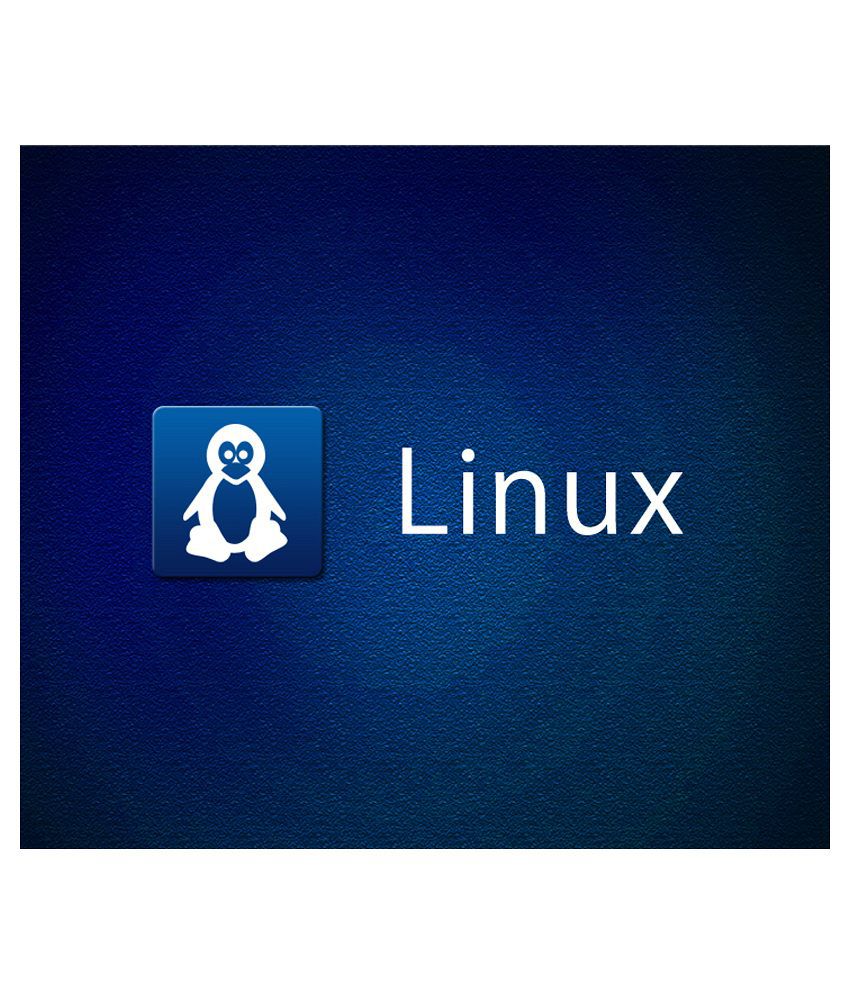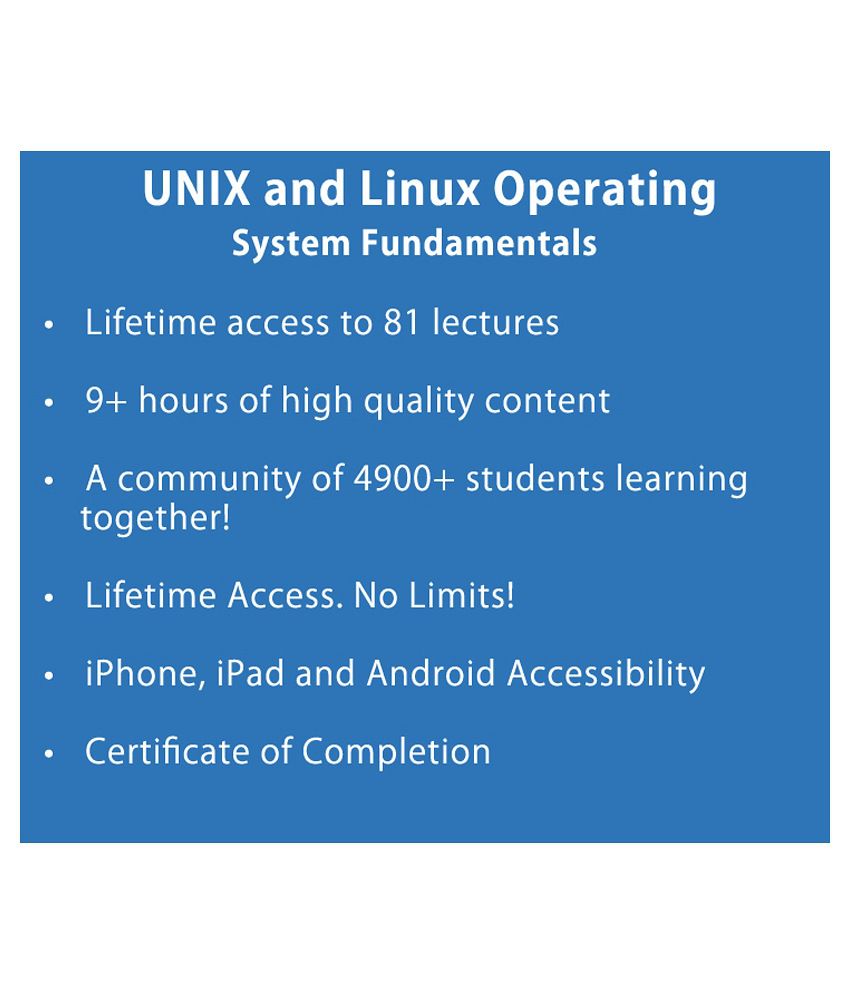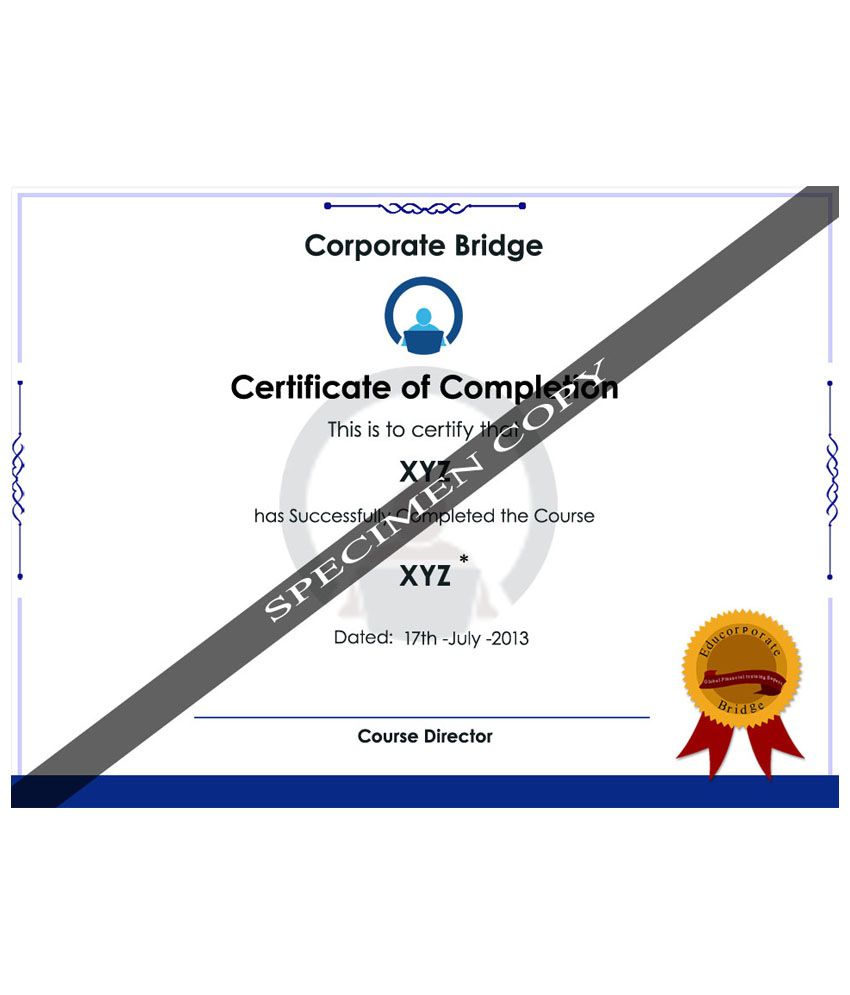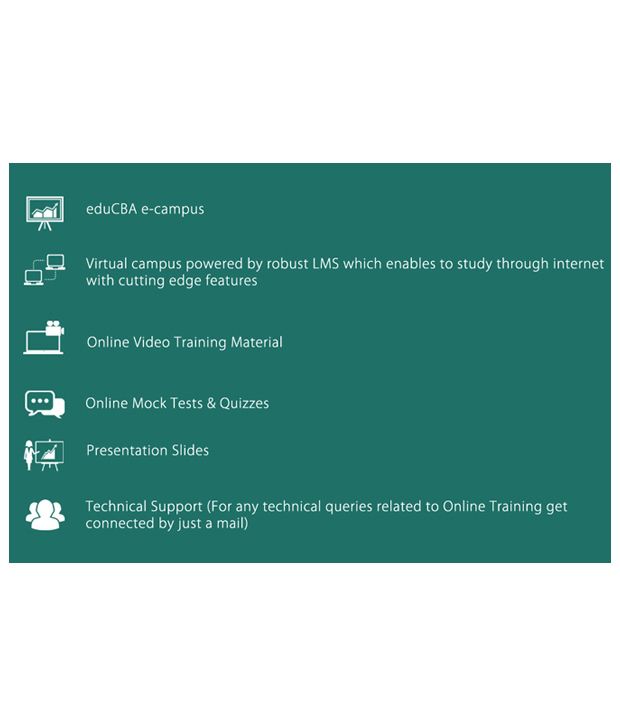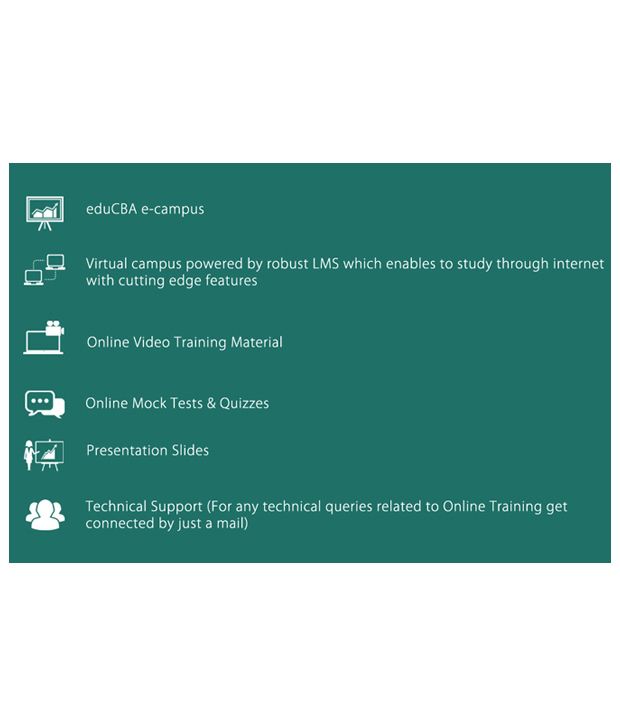![]()
Syste
m (Hardware/Software)
Requirements
| Operating
Software | Windows XP or
Higher
| | Processor | Minim
um P4 or Higher
| | RAM | 1 GB or
Higher
| | Browser | Any
| | Recommended Internet
Speed | Minimum 1MBPS
| | Supported Browser
Plug-ins | * Updated
Flash Player, * Update Java
| | Other
Requirements | Speaker or
headphone | |
Prdocut DescriptionThere are no prerequisites for this course, other than a desire to learn the basics of the UNIX and Linux operating systems, which includes UNIX shell scripting. UNIX and Linux Operating System Fundamentals course begins with a brief history and overview of both UNIX and Linux, and then proceeds to teach you the skills required for working on a server running either operating system. Hands-on lab exercises are used to reinforce key concepts, and are completed by logging in on a real server in our Internet Lab from your work or home computer. We will be covering the followings in this course:
1.Operating System Concepts
2.Getting Connected, Logging In, and Logging Out
3.Operating System Commands
4.Working with Directories
5.Working with Files
6.I/O Redirection, Pipes, and Filters
7.Getting Help
8.Processes and Jobs
9.The Shell - A Closer Look
10.Introduction to the vi Text Editor
11.Introduction to Shell Scripting/Programming
12.Tools and Utilities
13.Interacting with Other Users
Course Curriculum
Section1:Unix Introduction
Lecture1:Basics of unix operating system
Lecture2:Unix Architecture
Lecture3:Commands and Utilities
Lecture4:Changing Password, Listing Directories
Lecture5:Logging in, Logout
Section2:Files and directories
Lecture6:Unix File Management
Lecture7:Listing Files
Lecture8:LS Command
Lecture9:LS-L, Metacharacters
Lecture10:Hidden Files
Lecture11:Other LS Command Variants
Lecture12:Displaying Files Recursively by LS-R Command
Lecture13:Creating Files in Unix
Lecture14:Editing Files
Lecture15:Display Contents of a File
Lecture16:Copying Files in Unix
Section3:Unix Directory Management
Lecture17:Standard Unix Streams
Lecture18:Absolute/Relative Path Names
Lecture19:Removing Directories
Section4:Unix Permissions
Lecture20:Unix - File Permission / Access Modes
Lecture21:File Access Modes
Lecture22:Using chmod in Symbolic Mode
Lecture23:Use of chmod in with Absolute Permissions
Section5:Permissions+Environment
Lecture24:Permissions+Environment Part 1
Lecture25:Permissions+Environment Part 2
Lecture26:Permissions+Environment Part 3
Lecture27:Permissions+Environment Part 4
Lecture28:Permissions+Environment Part 5
Lecture29:Permissions+Environment Part 6
Lecture30:Permissions+Environment Part 7
Lecture31:Permissions+Environment Part 8
Section6:Basic file utility+pipes and Filters
Lecture32:Basic file utility+pipes and Filters Part 1
Lecture33:Basic file utility+pipes and Filters Part 2
Lecture34:Basic file utility+pipes and Filters Part 3
Lecture35:Basic file utility+pipes and Filters Part 4
Lecture36:Basic file utility+pipes and Filters Part 5
Lecture37:Basic file utility+pipes and Filters Part 6
Lecture38:Basic file utility+pipes and Filters Part 7
Lecture39:Basic file utility+pipes and Filters Part 8
Section7:Unix Important Commands
Lecture40:Unix Important Commands Part 1
Lecture41:Unix Important Commands Part 2
Lecture42:Unix Important Commands Part 3
Lecture43:Unix Important Commands Part 4
Lecture44:Unix Important Commands Part 5
Lecture45:Unix Important Commands Part 6
Lecture46:Unix Important Commands Part 7
Section8:Unix Processes
Lecture47:Unix Processes Part 1
Lecture48:Unix Processes Part 2
Lecture49:Unix Processes Part 3
Lecture50:Unix Processes Part 4
Lecture51:Unix Processes Part 5
Lecture52:Unix Processes Part 6
Lecture53:Unix Processes Part 7
Lecture54:Unix Processes Part 8
Lecture55:Unix Processes Part 9
Lecture56:Unix Processes Part 10
Lecture57:Unix Processes Part 11
Lecture58:Unix Processes Part 12
Lecture59:Unix Processes Part 13
Lecture60:Unix Processes Part 14
Lecture61:Unix Processes Part 15
Lecture62:Unix Processes Part 16
Lecture63:Unix Processes Part 17
Lecture64:Unix Processes Part 18
Lecture65:Unix Processes Part 19
Lecture66:Unix Processes Part 20
Lecture67:Unix Processes Part 21
Lecture68:Unix Processes Part 22
Lecture69:Unix Processes Part 23
Lecture70:Unix Processes Part 24
Section9:Unix Networking
Lecture71:Unix Networking Part 1
Lecture72:Unix Networking Part 2
Lecture73:Unix Networking Part 3
Lecture74:Unix Networking Part 4
Lecture75:Unix Networking Part 5
Lecture76:Unix Networking Part 6
Lecture77:Unix Networking Part 7
Lecture78:Unix Networking Part 8
Lecture79:Unix Networking Part 9
Lecture80:Unix Networking Part 10
Lecture81:Unix Networking Part 11
Benefits
eduCBA e-campus
Virtual campus powered by robust LMS which enables to study through internet with cutting edge features
Online Video Training Material
Presentation Slides
USP of the product
* 24 x 7 online access* Learn from tutorials curated by expert industry professionals and trainers* Certificate of Completion* Practical application oriented skillsHow to use? (Steps to use Study Material)
Step 1 - eduCBA sends the redemption coupon along with the registration link. Step 2 - Student will register with his register email id and coupon Step 3 - Student receive the course access and password on his/her email idStep 4 - Login using your email id and password and start learningTo get more information, you may want to watch the video below
Learn Everything, Anywhere, Anytime
India's Largest Online Education Marketplace
